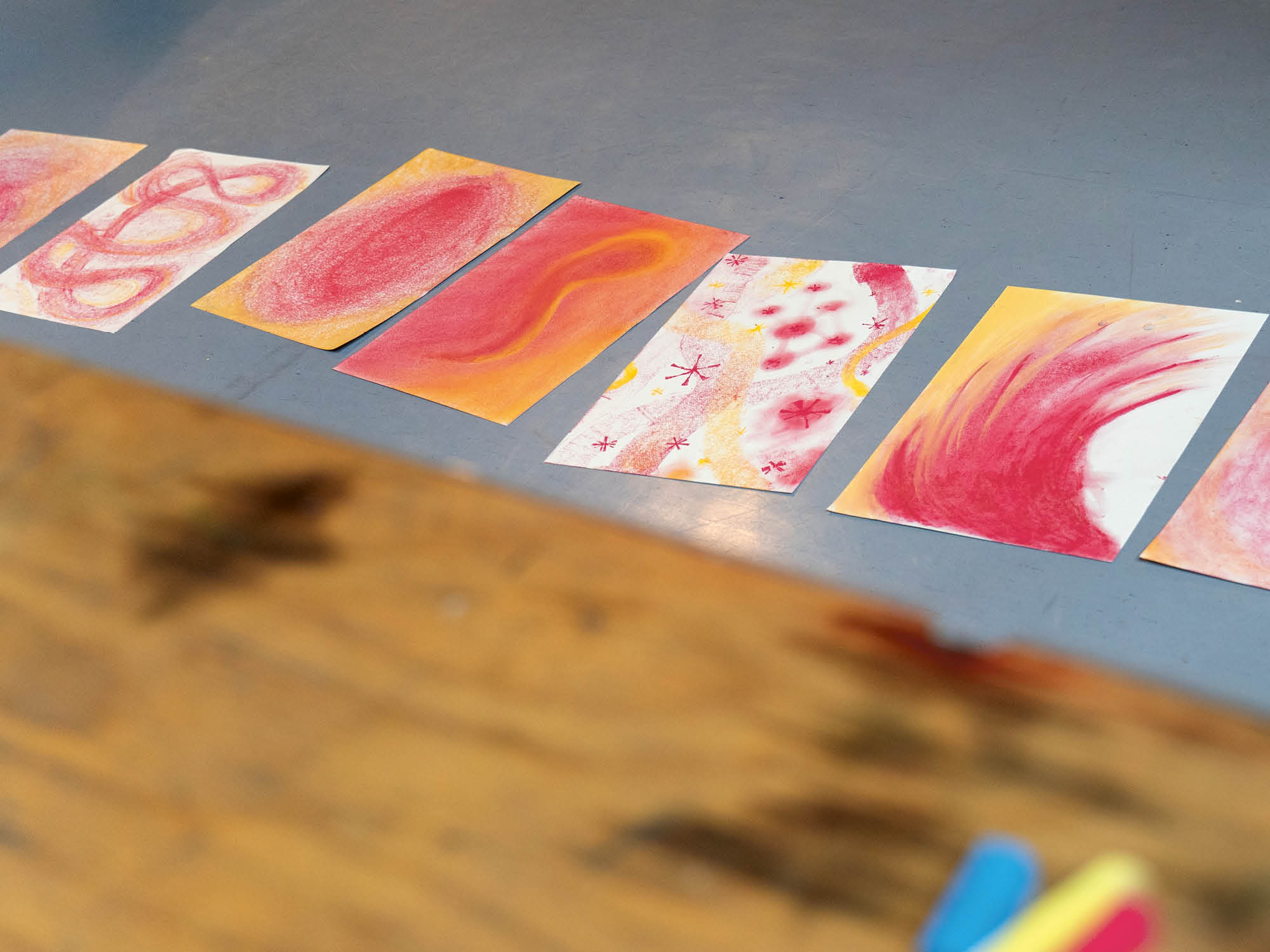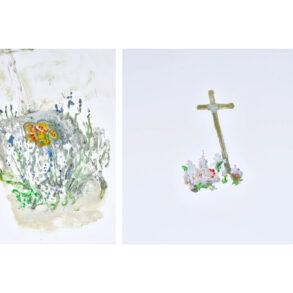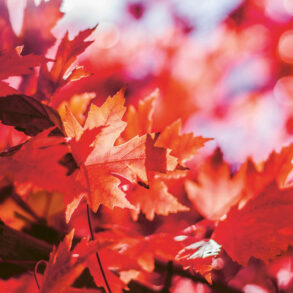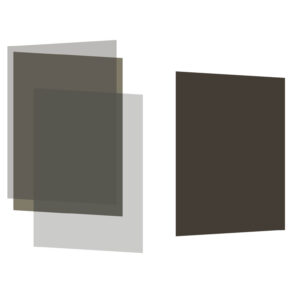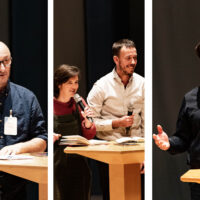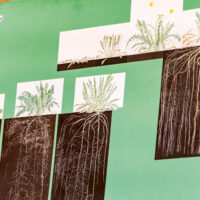For many years, we have read the Michael Letters as a foundation for our Agriculture Conference. Now, we are finding new ways of bringing it so that it can live in our hearts and become part of our work. Eduardo Rincón and Monique Macfarlane share thoughts and feelings inspired by working together with “The Task of Michael in the Sphere of Ahriman.” The first of three such dialogues, held during the Agriculture Conference in Dornach, 2025.
Eduardo Rincón We have been working together for the past 2-3 months with this letter on calls. It was really beautiful because while I was here, in awe of the first winter snow that I’d ever seen in my life, she was working in the summer. Monique, do you want to introduce yourself?
Monique Macfarlane Thank you, Eduardo. My heart, my hands, and my feet reside in the lands of Aotearoa—New Zealand. I live on the edge of the South Pacific Ocean, where the pōhutukawa [trees] speak to the whales, the winds blow from the southwest, and the spirits guide me home. I am a biodynamic practitioner, and it has given me this beautiful life with the land and this incredible relationship with myself. I’ve been immersed in locations throughout New Zealand, and worked with our association. I’m currently co-creating with my parents on seven hectares. I invite people onto the land through workshops and consultations, which brings me the greatest joy because I can connect people back to the land and, ultimately, to themselves through a profound connection to nature. And you?
ER Thank you. I was born in Mexico. We had a cattle ranch for many years when I was young. I went on to study biology and work in the tropical forest and then the desert. I became really involved in Biodynamics, was president of the association in Mexico, and was involved in many initiatives. Now, I am the co-leader of the Section of Agriculture, and I want to bring what we have in the Americas to Europe—the warmth, the feeling of life. And this is what we are going to attempt today: to bring different perspectives, because I think in the audience we have very profound, seasoned anthroposophists, but we also have people that are still young in anthroposophy, young in farming, and we want to invite everybody to be together as a working community. So how does this Michael Letter live in us in our different parts of the world? How is it breathing between us?
MM When this letter lives within me, the significant point comes through the journey with the land and biodynamics, working with community and the rhythms of nature. In New Zealand, we primarily follow the Gregorian calendar. So Christmas is this really interesting time where it’s high summer, the zucchinis are beginning their glut, the tomatoes are blushing in the sun, and the light is the most abundant. And then there’s this one day that hangs amongst it all. We’re encouraged to take time off and spend it with family and friends, and yet the garden calls me, and the land needs my caress. It’s only in the last year, as I’m introduced to the anthroposophical Christ and the concept of the human being as a Sun for the Earth, that I understand why the birth comes days after the deepest darkness. Easter is also fascinating because there’s all this marketing with little bunnies and new growth, and yet I’m pulling in four tonnes of pumpkins and preparing to store them for winter. I feel this incredible disconnect, almost like I’m struggling to breathe. But we’ve had this beautiful opportunity recently in New Zealand, where there’s been a reorientation for the New Year to be in June and July, and we’ve started to celebrate Matariki, which is when the stars reappear. This is our natural new year. It’s like an exhalation, where I can live in tune with the earth that’s around me.
ER I grew up on a ranch and have traveled around Mexico, seeing all the diversity that we’re fortunate to have there. I fell completely in love with nature and said, I have to study life. So I went into science and was faced with something that had no connection with life. Of course, I was seduced by intellect. I was thirsty to know why carbon dioxide and water plus sunlight give sugar and oxygen. How does that happen? It was very beautiful, but in the end, I felt completely lonely. I thought, is it possible to really understand the wholeness of nature through dead abstract thoughts? Our ancestors recognized the sun as a key element in the cosmos, and many indigenous people in Mexico base their whole mythology on the sun. So, coming back to the formula for photosynthesis, I thought: in this formula is sunlight. If we can think of that in an anthroposophical way, then it makes sense that this spiritual light comes into the world and transforms matter. I started making peace with science.
I had the opportunity to travel to the Yucatan peninsula, where the Mayan culture is still vibrant and living. I studied with an archaeologist, looking into the rhythms of the cosmos—astronomy from the Mayan point of view. I got really immersed in this consciousness of the cycles of the year and how far we are from them nowadays until I found anthroposophy, which bridged these worlds. It was beautiful for me to grasp how our ancestors understood and lived in the spirit, and now that we have become detached, we have a path, a possibility to move into a more profound coming back into the spiritual world with our full being.
MM Biodynamics has birthed this incredible pathway into nature communication work for me, and it’s through this that I understand another layer of what a living thought is. We all have the ability to communicate with nature, but often it takes a little bit of practice for some of us to get back to. Now, when I’m with the farm and garden, there’s a different quality within me that I feel, which I attribute to a living thought. I used to get into the garden with a to-do list a mile long, and now I step into it with only 2 or 3 things because prompts will come within me that work in a way that’s completely different from how I used to work. There’s a visceral feeling when something arises within my body, and I can feel this living thought as opposed to something that comes from my mind. I find such nutrition, not only for myself but all the beings around me, when I drop into this heart space.
ER There is a longing in many places to go back to the way we used to do things. Sometimes, when we teach in places that have strong indigenous communities, this is the request. Why don’t we go back to this agriculture that our ancestors were working with? But the world is not the same world. It has changed; our consciousness has changed. What tools do we have to connect us to that ancient way of doing things and bring it to the present and into the future? There are things in our work in anthroposophy, the festivals, for example, that connect us with what our ancestors were doing. We bring it to the present and move it into the future by understanding: What is a festival of Easter? What is a festival of winter? We also have the calendar of the soul: How does my soul feel in winter, or spring, or summer? We have these amazing, profound, beautiful verses to attune ourselves with nature and the passage of the year.
MM There’s a beautiful cultural proverb from the lands that I’m from, and it says: “I walk backwards into the future with my eyes fixed on the past.” To navigate well into our collective future, we need to clearly understand our past. I think this is the beauty of the Michael Letter, because it illuminates what that past is and where we’re going.
ER There’s a beautiful cultural proverb from the lands that I’m from, and it says: “I walk backwards into the future with my eyes fixed on the past.” To navigate well into our collective future, we need to clearly understand our past. I think this is the beauty of the Michael Letter, because it illuminates what that past is and where we’re going.
MM Working on this letter together for the last months, there’s been this really beautiful process of sharing that’s brought it to life. I love how we read the letter and then go about our work and then come back. I would go off and read different lectures and try to understand. And then every time I would read the letter again, a couple of weeks later, I would see it completely differently. There’s a really crucial aspect of working with these Michael Letters, and in sharing and beauty.
These are edited excerpts from a dialog held at the Agriculture Conference in Dornach, 2025. The entire conversation will be available on Goetheanum TV.

